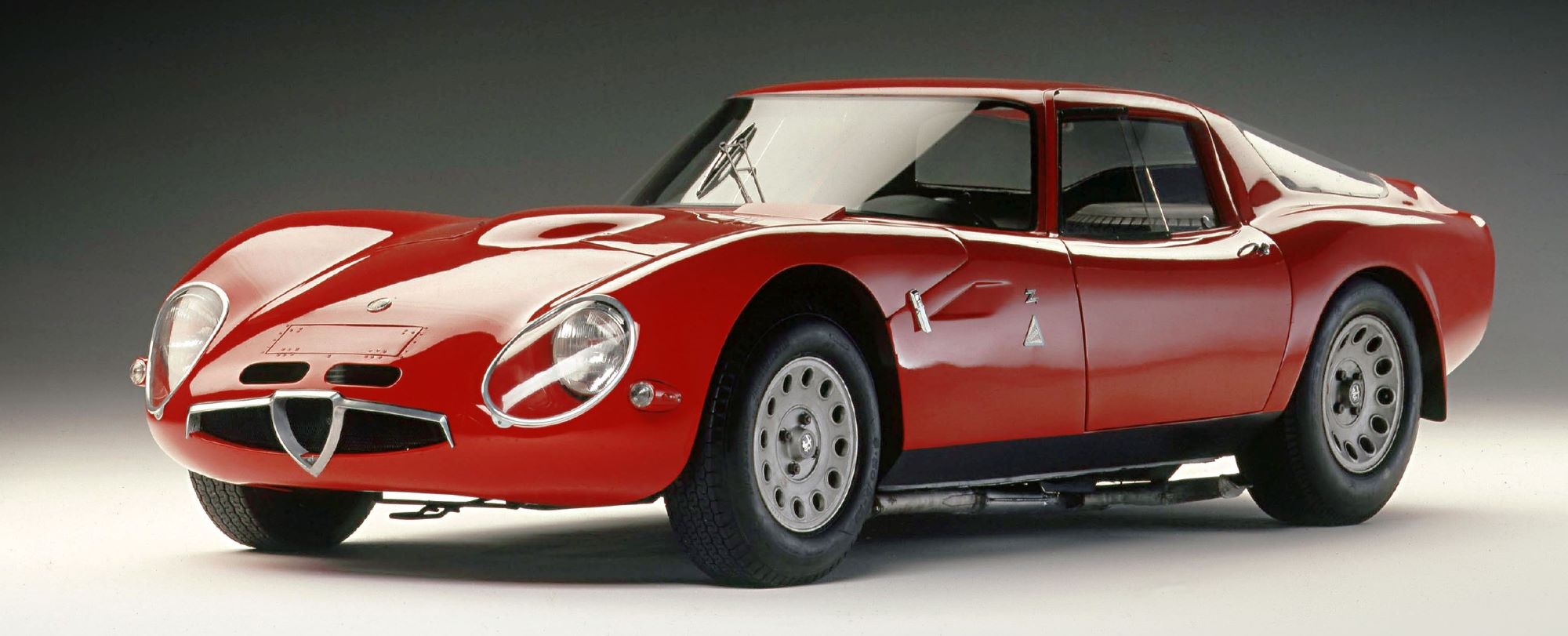
Alfa Romeo Giulia TZ2
The racing career of the TZ2, while brief, was very successful. In 1966 the car ran in five international events, of which it took first class every time. Autodelta did take a stab at LeMans in 1965, but none of the three cars managed to finish. Due to their high cost, only 12 to 14 original TZ2s were manufactured. The name TZ stands for “Tubolare Zagato”, or “Tubular Zagato” in English. It implies two things: one, the car had a lightweight tubular frame chassis instead of the Giulia’s unitary steel construction. Second, its bodywork was designed and built by Zagato. This was a model intended for racing application, and as the name Tubolare Zagato implies, it mounted an aerodynamic aluminum body on a steel tubular space frame. To this extremely lightweight chassis only weighing 660 kg, was mounted a DOHC 1.6-liter engine from the Julia series, producing 110 BHP/6,500 rpm. The first TZ was born in 1963.

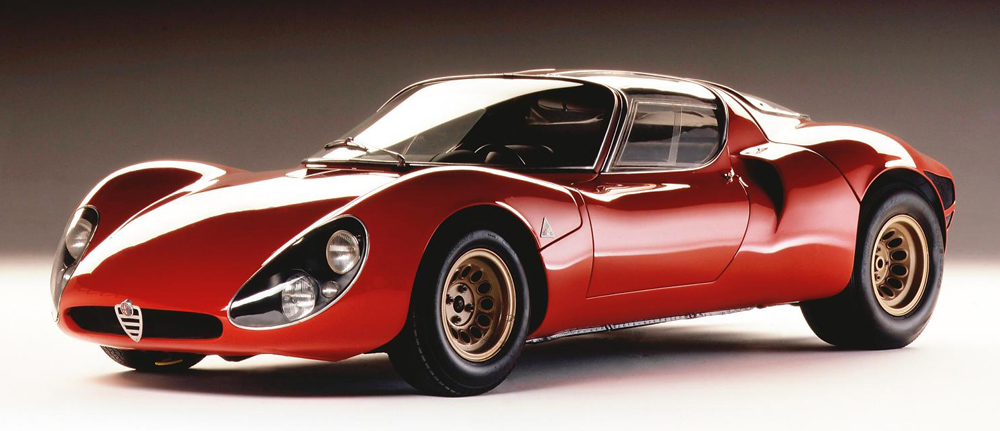
Alfa Romeo 33 Stradale prototipo (1967)
33 Stradale prototipo (1967)
Engine:……….V8-90°, 1995 cc, twin spark
Power:………..230 hp @ 8800 rpm (227 bhp)
Top speed:…..163 mph (260 kmph)
Body:………….Franco Scaglione
The “33 Stradale” is considered one of the “most-beautiful-design-ever” sportscars, with its superb 2 litre V8-90° engine, for dramatic performance. Its advanced magnesium frame weighs only 54 kg. The “Stradale” represented the return of the 8 cylinder engine for Alfa Romeo. Designed by Franco Scaglione, built by Autodelta, in the factory of Settimo Milanese.
The 33 Stradale (Italian for “road-going”) was built entirely by hand and with mid-engine configuration (1967-1969). The Stradale was one of the world’s first supercars, with a top speed of 162 mph (260 kph).

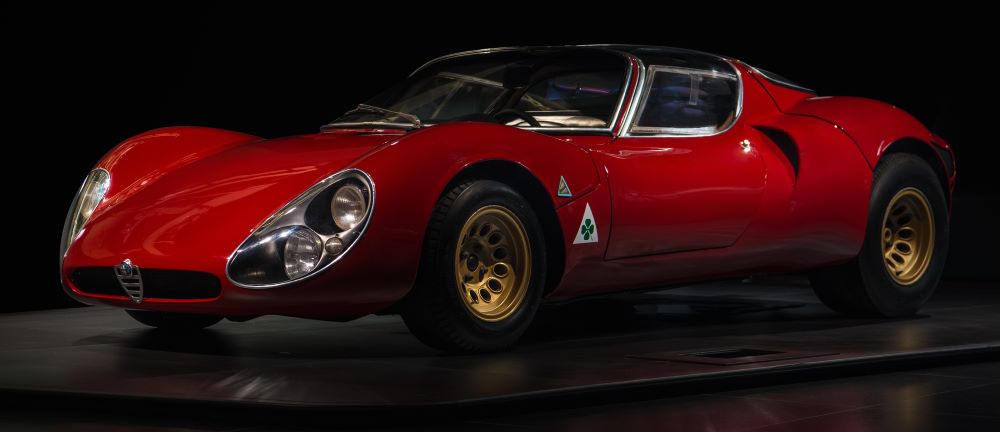
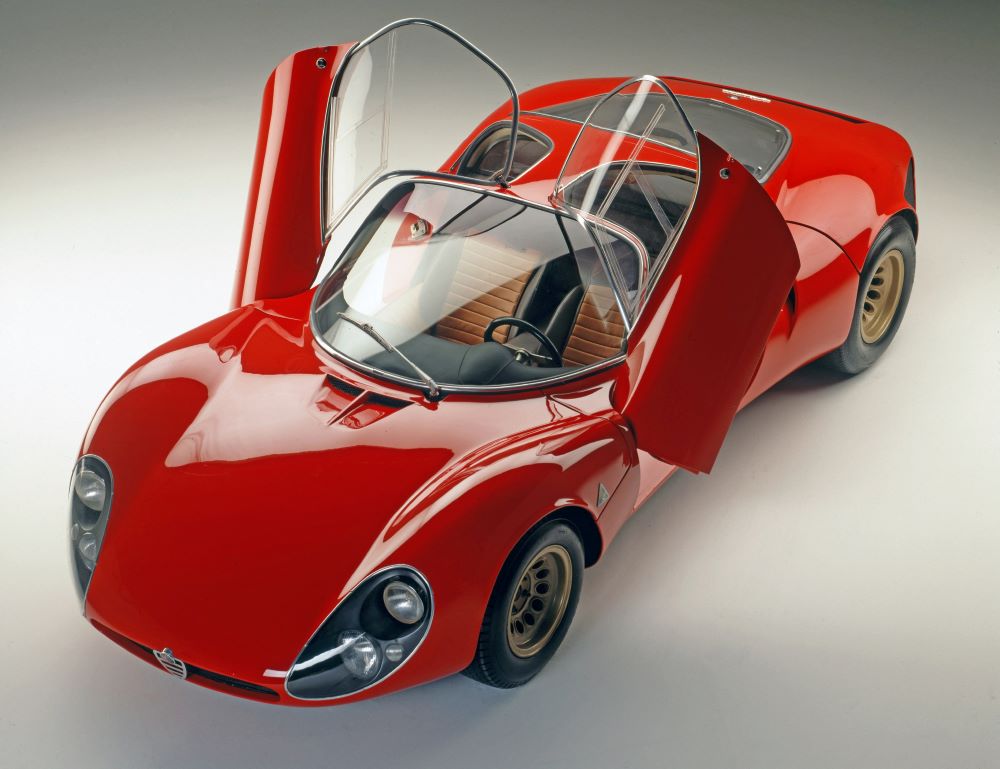


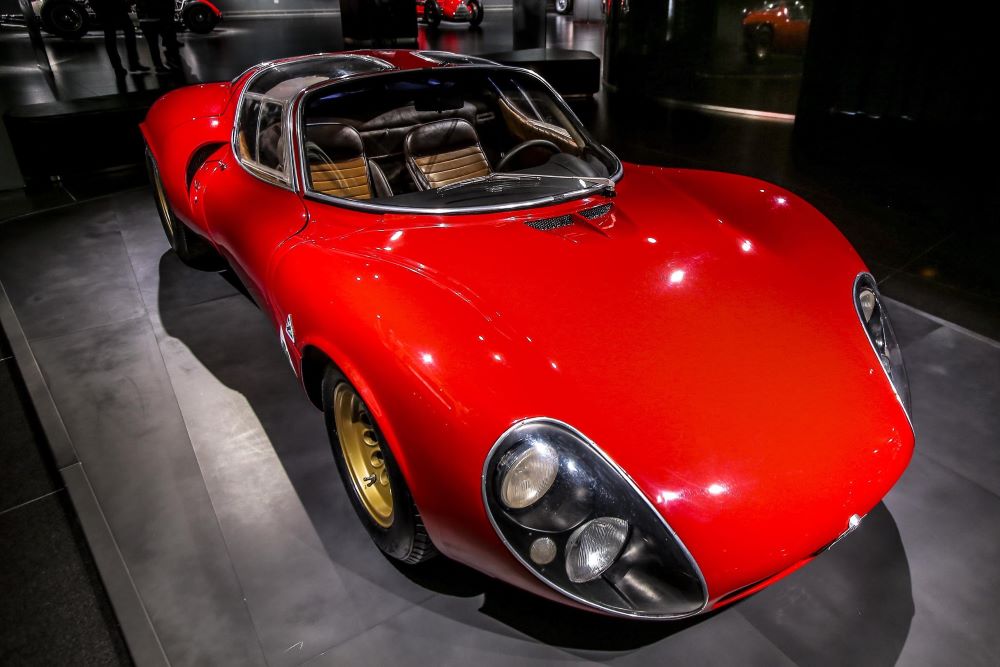
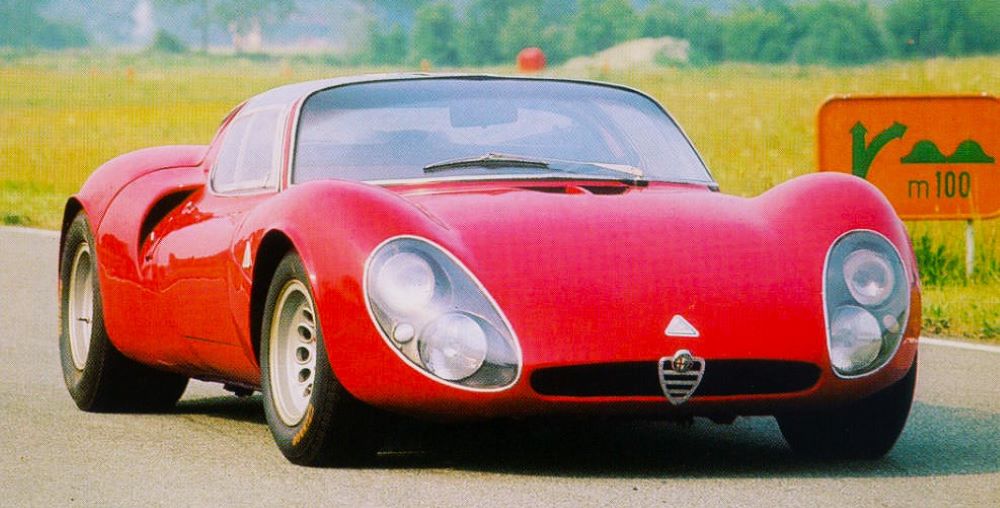
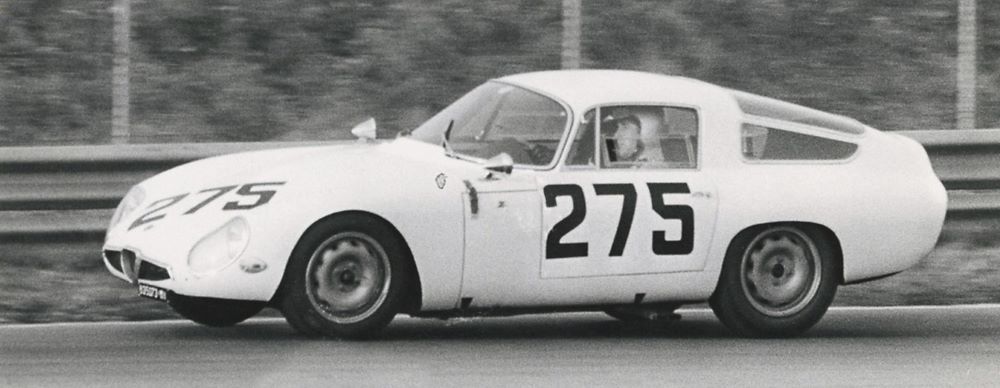

You must be logged in to post a comment.